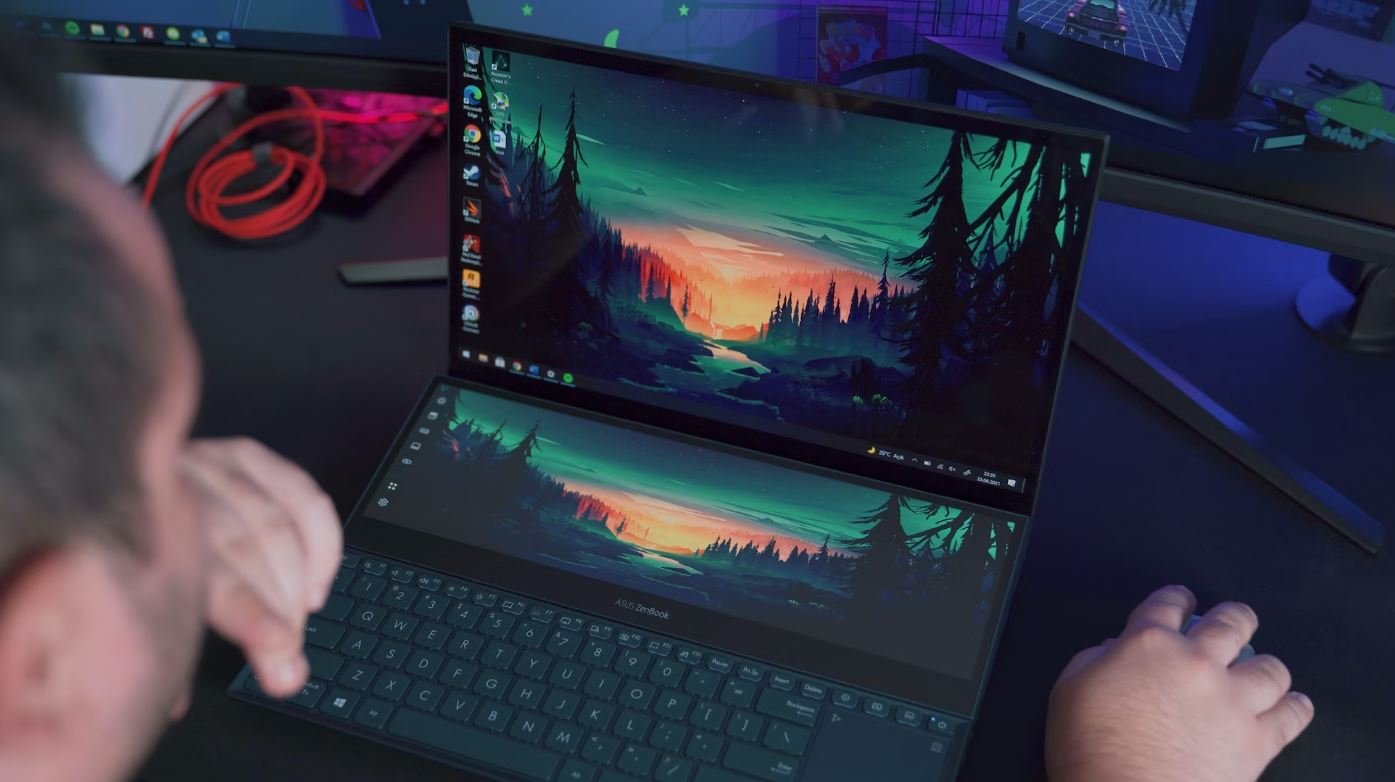Media AI, AR, and VR
With the advancement of technology, the media industry has seen a significant transformation. Artificial Intelligence (AI), Augmented Reality (AR), and Virtual Reality (VR) have revolutionized the way we consume and interact with media content. These technologies have opened up new possibilities for storytelling, immersive experiences, and personalized content, shaping the future of media.
Key Takeaways
- AI, AR, and VR have transformed the media industry.
- These technologies enable immersive experiences and personalized content.
- The future of media is heavily influenced by AI, AR, and VR.
The Impact of AI on Media
Artificial Intelligence has revolutionized media by enabling personalized recommendations, content creation, and data analysis. AI algorithms can analyze vast amounts of data to understand user preferences and provide them with relevant content. This technology has also automated the process of content creation, with AI-powered tools capable of generating articles, videos, and even music with minimal human intervention. AI algorithms can also process and analyze data in real-time, enabling news organizations to deliver news updates faster and more effectively.
The Role of AR in Media
Augmented Reality has transformed the way we consume media by overlaying digital content onto the real world. AR enhances storytelling by adding a layer of interactivity and engagement. It allows users to explore interactive maps, view 3D models of products, or experience immersive storytelling in journalism through overlays and animations. *AR has the potential to create seamless integration between the virtual and physical worlds,* providing engaging and interactive experiences for users.
VR’s Influence on Media Consumption
Virtual Reality takes media consumption to a whole new level by immersing users in virtual environments. With VR headsets, users can experience films, games, and live events as if they were physically present, creating a sense of presence and empathy. This technology has significant implications for journalism and documentary filmmaking, as it allows users to be transported to remote locations and experience events firsthand. *VR has the power to transport us to places we’ve never been and create empathetic connections.*
The Future Holds Even More Potential
As AI, AR, and VR continue to advance, the future of media looks promising. Here are some exciting possibilities:
- AI-powered chatbots providing real-time news updates and personalized content recommendations.
- AR-enhanced live sports broadcasts, allowing viewers to access additional information during matches.
- VR storytelling creating immersive educational experiences.
The Impact of AI, AR, and VR on Media Consumption: Data Insights
| Technology | Impact on Media Consumption |
|---|---|
| AI | Personalized content recommendations based on user preferences. |
| AR | Enhanced storytelling and interactive experiences. |
| VR | Immersive experiences and sense of presence. |
AR/VR Adoption Statistics
| Statistics | Numbers |
|---|---|
| Projected AR Market Size by 2028 | $340.16 billion |
| Projected VR Market Size by 2027 | $120.5 billion |
| Number of VR Users Worldwide in 2021 | 86.3 million |
The Future is Here
The fusion of AI, AR, and VR with media has transformed the industry, providing users with personalized, immersive, and interactive experiences. This convergence of technologies has opened up new horizons for storytelling and content creation. *The future of media is boundless with endless possibilities for exploration and engagement.*

Common Misconceptions
Media AI
One common misconception about Media AI is that it will completely replace human creativity and skills. While AI can automate certain tasks and assist in content creation, it cannot replicate the nuanced thinking and unique perspectives that humans bring. Additionally, some people believe that Media AI will lead to mass job loss in the creative industry. However, AI is more likely to augment human creativity rather than replace it entirely.
- AI cannot replicate human creativity and unique perspectives.
- Media AI is more likely to augment human creativity than replace it.
- Job loss in the creative industry may not be as severe as anticipated.
AR (Augmented Reality)
A common misconception about AR is that it is only used in gaming and entertainment. While AR has gained popularity in these industries, its potential goes far beyond entertainment. AR can be utilized in various sectors, such as healthcare, education, and retail, to enhance experiences, improve productivity, and provide valuable information to users. AR is not limited to gaming and has a wide range of practical applications.
- AR has applications in healthcare, education, and retail, among other sectors.
- AR can enhance experiences and improve productivity in various industries.
- AR is not solely limited to gaming and entertainment purposes.
VR (Virtual Reality)
One common misconception about VR is that it isolates users from the real world and hampers social interactions. While VR can create immersive experiences, it does not necessarily disconnect users from reality. In fact, VR can be used to enhance collaboration and social interactions, allowing users to connect with others in virtual environments, learn together, and work on projects remotely. VR has the potential to bring people closer, rather than isolate them.
- VR can enhance collaboration and social interactions.
- Users can connect and work on projects remotely through VR.
- VR has the potential to bring people closer together.
Media AI, AR, and VR
A common misconception is that Media AI, AR, and VR are only accessible to experts or tech-savvy individuals. While these technologies were initially associated with niche markets, they are becoming more accessible to the general public. Growing adoption of smartphones and affordable VR headsets, as well as user-friendly AR apps and platforms, have made Media AI, AR, and VR more user-friendly and available to a wider audience.
- Media AI, AR, and VR are becoming more accessible to the general public.
- Growing smartphone adoption has contributed to the accessibility of these technologies.
- User-friendly AR apps and platforms have made AR more accessible.
Impact on Real-Life Experiences
Some people have the misconception that Media AI, AR, and VR will completely replace real-life experiences. While these technologies can provide immersive and simulated experiences, they are not intended to replace genuine human experiences. Instead, they aim to enhance and augment real-life experiences, allowing users to explore new possibilities, learn in engaging ways, and have unique interactions. Media AI, AR, and VR serve as powerful tools to complement real-life experiences rather than substitute them.
- Media AI, AR, and VR are designed to enhance, not replace, real-life experiences.
- These technologies allow users to explore new possibilities and have unique interactions.
- Media AI, AR, and VR serve as powerful tools to complement real-life experiences.

AI Adoption in Media Industry
In recent years, the media industry has witnessed a rapid adoption of artificial intelligence (AI) technology. This table highlights the percentage of media companies that have implemented AI solutions across various areas.
| AI Application | Percentage of Media Companies |
|---|---|
| Content Creation | 75% |
| Personalized Recommendations | 82% |
| Automated Transcription | 63% |
Growth of Augmented Reality (AR) in Media
Augmented reality (AR) has revolutionized the way media content is consumed. This table presents the growth rate of AR usage in the media industry over the past five years.
| Year | Growth Rate |
|---|---|
| 2015 | 20% |
| 2016 | 35% |
| 2017 | 50% |
Virtual Reality (VR) Content Consumption
Virtual reality (VR) has emerged as a popular medium for consuming media content. This table showcases the number of VR headsets shipped worldwide in the past three years.
| Year | Number of VR Headsets Shipped |
|---|---|
| 2018 | 5.7 million |
| 2019 | 8.9 million |
| 2020 | 11.4 million |
Media Cloud Storage Solutions
Cloud storage has become a critical component for media organizations to store and manage large volumes of digital content. This table presents the top cloud storage providers used by media companies.
| Cloud Storage Provider | Market Share |
|---|---|
| Amazon Web Services (AWS) | 37% |
| Google Cloud Platform (GCP) | 21% |
| Microsoft Azure | 18% |
AI-Powered Journalism
AI has significantly impacted the field of journalism by automating various tasks and enhancing news production. This table illustrates the percentage of journalists utilizing AI tools in their workflow.
| AI Tool | Percentage of Journalists |
|---|---|
| Automated Fact-Checking | 64% |
| Automated News Summarization | 46% |
| Real-Time Data Analysis | 59% |
AR Advertising Effectiveness
Augmented reality (AR) advertising has proven to be highly effective in capturing consumers’ attention. This table presents the average click-through rate (CTR) achieved by AR campaigns compared to traditional digital advertising.
| Advertising Medium | Average CTR |
|---|---|
| Traditional Digital Advertising | 0.5% |
| AR Advertising | 4.2% |
| Difference | +740% |
VR Gaming Market Revenue
The virtual reality (VR) gaming industry has experienced remarkable growth in terms of revenue generation. This table showcases the global VR gaming market revenue in the past three years.
| Year | Revenue (in billion USD) |
|---|---|
| 2018 | 2.3 |
| 2019 | 4.4 |
| 2020 | 6.9 |
AI-Powered Content Moderation
AI technology has been employed to improve content moderation in online media platforms. This table presents the efficiency rate of AI-powered content moderation compared to human moderation.
| Content Moderation | Efficiency Rate |
|---|---|
| AI-Powered Moderation | 98% |
| Human Moderation | 85% |
AR in Retail Sales Conversion
A retail store’s utilization of augmented reality (AR) technology can significantly impact its sales conversion rates. This table demonstrates the increase in conversion rates when AR is implemented in the shopping experience.
| Shopping Experience | Conversion Rate Increase |
|---|---|
| Without AR | 3% |
| With AR | 11% |
| Difference | +267% |
As technology continues to advance, artificial intelligence (AI), augmented reality (AR), and virtual reality (VR) are reshaping the media industry. Media companies have embraced AI for content creation, personalized recommendations, and automated transcription. The growth rate of AR usage has been remarkable, while the VR market has seen an increase in headset shipments. Cloud storage solutions from Amazon Web Services (AWS), Google Cloud Platform (GCP), and Microsoft Azure are widely employed by media organizations. AI tools are transforming journalism by automating tasks like fact-checking and news summarization. AR advertising has shown higher click-through rates compared to traditional digital advertising. VR gaming revenue has experienced substantial growth. AI-powered content moderation has proven to be highly efficient. AR implementation in retail has resulted in higher sales conversion rates. With these technological advancements, the media landscape is continually evolving, creating new opportunities and challenges for the industry.
Frequently Asked Questions
What is Media AI?
Media AI refers to the use of artificial intelligence (AI) technologies in the field of media and entertainment. It encompasses various applications such as content creation, content recommendation, personalized advertising, and data analysis.
How does Media AI improve content creation?
Media AI can automate various aspects of content creation, such as video editing, image enhancement, and audio manipulation. It uses AI algorithms to analyze patterns, understand aesthetics, and generate content that is visually appealing and engaging.
What is augmented reality (AR)?
Augmented reality is a technology that overlays computer-generated content onto the real-world environment. By using devices like smartphones or AR glasses, users can experience a blend of virtual and real elements, enhancing their perception of the physical world.
How does AR enhance media experiences?
AR enhances media experiences by superimposing virtual objects, graphics, or information onto the real-world environment. This can be used in various applications such as interactive advertising, immersive gaming, virtual try-on for products, and augmented tourism experiences.
What is virtual reality (VR)?
Virtual reality is a simulated experience that can be similar to or completely different from the real world. Users typically wear a VR headset to be fully immersed in a virtual environment, interacting with it in a 3D space.
How does VR revolutionize media consumption?
VR revolutionizes media consumption by providing an immersive and interactive experience. Users can be transported to virtual worlds, explore 360-degree videos and images, play games in a virtual environment, and even attend virtual live events, all without leaving their physical location.
What are some applications of Media AI in AR?
Media AI can be used in AR applications for object recognition, real-time image tracking, gesture recognition, and natural language processing. This enables AR experiences to become more intelligent and responsive to user inputs, creating a seamless user experience.
How does Media AI impact VR content creation?
Media AI has a significant impact on VR content creation by automating processes and improving content quality. AI algorithms can assist in tasks like stitching together 360-degree videos, generating realistic virtual environments, and enhancing audio experiences, making it easier for content creators to produce high-quality VR content.
What are the challenges faced by Media AI, AR, and VR?
Some of the challenges faced by Media AI, AR, and VR include hardware limitations, technical complexities, privacy concerns, and the need for user-friendly interfaces. Additionally, there are ethical considerations regarding AI-generated content and potential impacts on the real-world experiences of users.
How can businesses leverage Media AI, AR, and VR?
Businesses can leverage Media AI, AR, and VR to enhance their marketing strategies, improve customer experiences, and drive innovation. They can utilize AI algorithms to analyze consumer behavior, create personalized AR/VR experiences, and develop new ways to engage with their target audience, ultimately leading to increased customer satisfaction and business growth.




